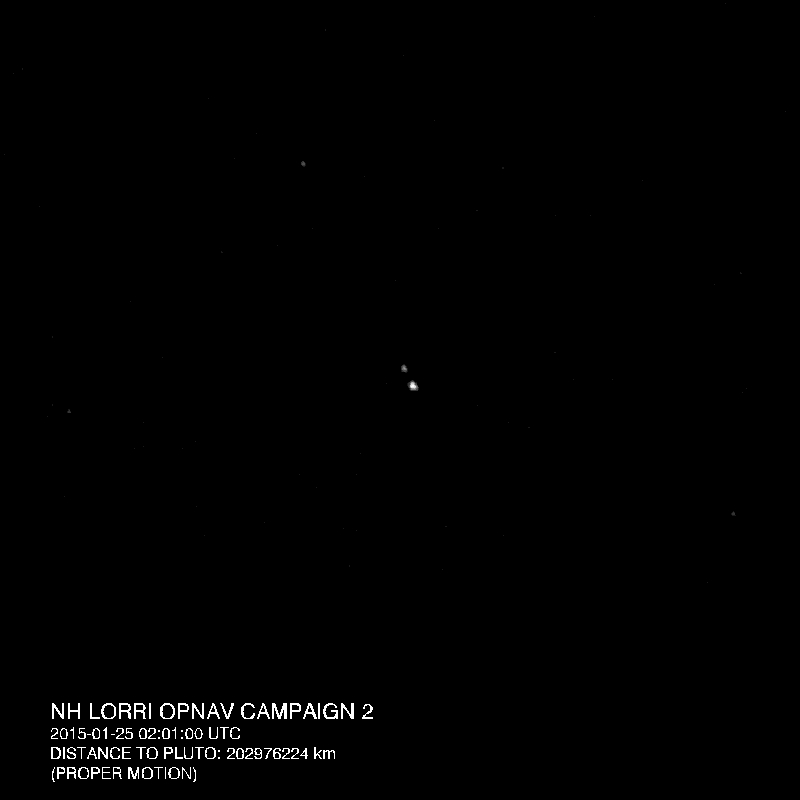This time-lapse “movie” of Pluto and its largest moon, Charon, was recently shot at record-setting distances with the Long-Range Reconnaissance Imager (LORRI) on NASA’s New Horizons spacecraft. The movie was made over about a week, from Jan. 25-31, 2015. It was taken as part of the mission’s second optical navigation (“OpNav”) campaign to better refine the locations of Pluto and Charon in preparation for the spacecraft’s close encounter with the small planet and its five moons on July 14, 2015.
Pluto and Charon were observed for an entire rotation of each body; a “day” on Pluto and Charon is 6.4 Earth days. The first of the images was taken when New Horizons was about 3 billion miles from Earth, but just 126 million miles (203 million kilometers) from Pluto-about 30% farther than Earth’s distance from the Sun. The last frame came six and a half days later, with New Horizons more than 5 million miles (8 million kilometers) closer.
The wobble easily visible in Pluto’s motion, as Charon orbits, is due to the gravity of Charon, about one-eighth as massive as Pluto and about the size of Texas.
Faint stars can be seen in background of these images. Each frame had an exposure time of one-tenth of a second, too short to see Pluto’s smaller, much fainter moons. New Horizons is still too far from Pluto and its moons to resolve surface features.
The time-lapse frames in this movie were magnified four times to make it easier to see Pluto and Charon orbit around their barycenter, a mutual point above Pluto’s surface where Pluto and Charon’s gravity cancels out – this is why Pluto appears to “wobble” in space. Charon orbits approximately 11,200 miles (about 18,000 kilometers) above Pluto’s surface.
